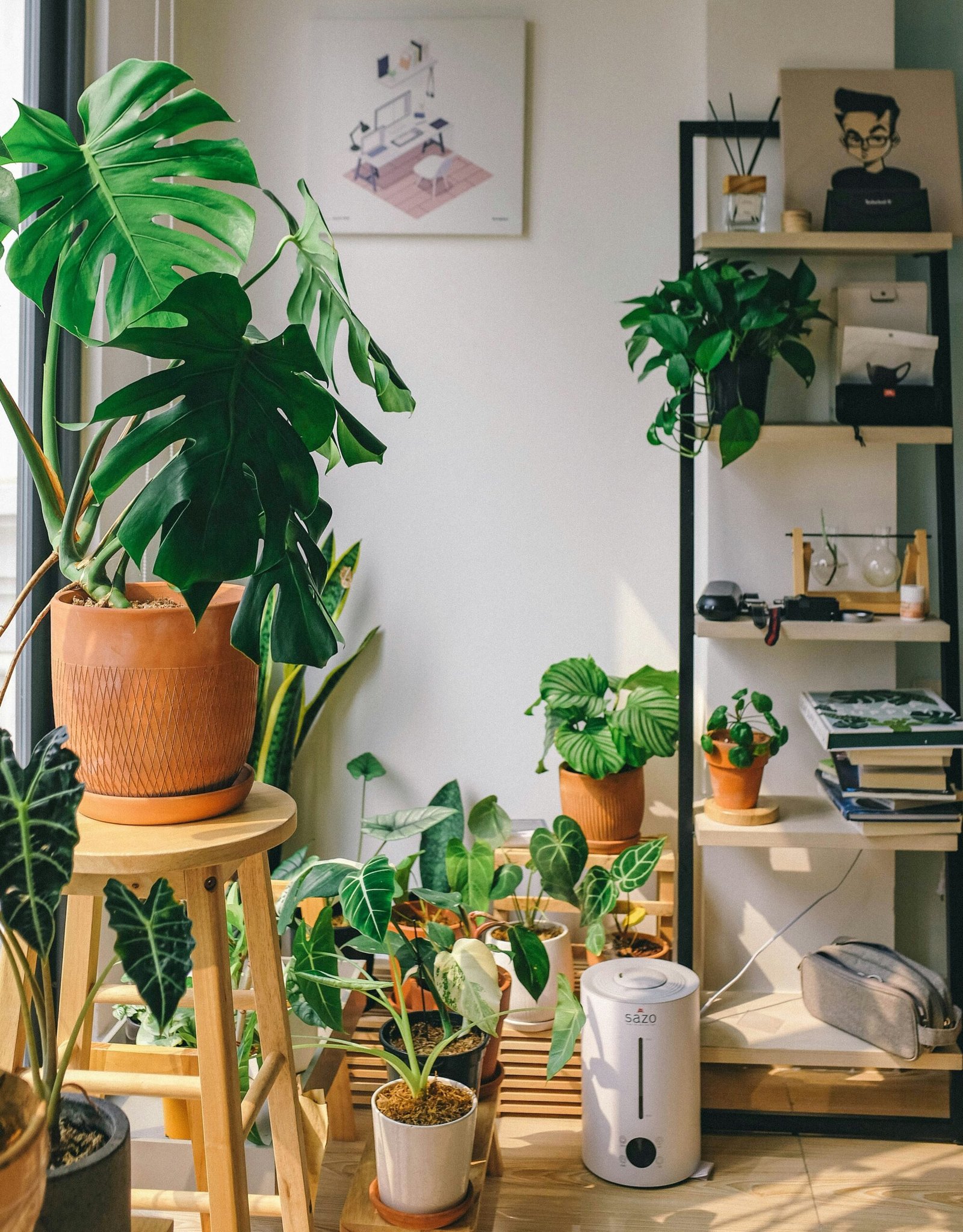?Want to turn your bedroom into a peaceful, plant-filled retreat that reflects your style and improves your well-being?
How Can I Decorate My Bedroom With Plants?
You’re asking a great question. Decorating your bedroom with plants is a rewarding project that brings color, texture, and life to a private space. In this guide you’ll get practical advice, plant suggestions, styling ideas, care tips, and safety considerations so you can create a bedroom that looks beautiful and feels restful.
Why Add Plants to Your Bedroom?
Plants do more than look pretty — they can improve air quality, boost mood, and increase a sense of calm. You’ll also find that plants add texture and height to a room, helping you achieve a layered, lived-in look without cluttering surfaces.
How Plants Affect Sleep and Well-being
Some plants can slightly increase oxygen levels and humidity, which can be soothing at night. Even if the air quality benefits are modest, caring for plants gives you a calming routine that may ease stress. You’ll also notice that greenery softens harsh lines and creates a more restful aesthetic.
Planning Your Plant Decor
Before you buy anything, take a moment to plan. You’ll want to assess light, space, maintenance ability, and your design goals. A little planning prevents impulse buys that may not thrive.
Assess the Light
Note where natural light comes from and how strong it is at different times of day. North-facing rooms get low light, east-facing get morning sun, south-facing are the brightest, and west-facing get afternoon sun. Match plants to these conditions for success.
Consider Space and Scale
Think about the room’s layout, furniture, and pathways. You don’t want plants to obstruct movement or cover key pieces. Measure potential spots so you pick pots and stands that fit proportionally.
Match Plants to Your Lifestyle
Be honest about how much time you’ll devote to plant care. If you travel a lot or forget watering, choose resilient, low-maintenance species. If you enjoy tending plants, you can include more finicky or statement-making specimens.
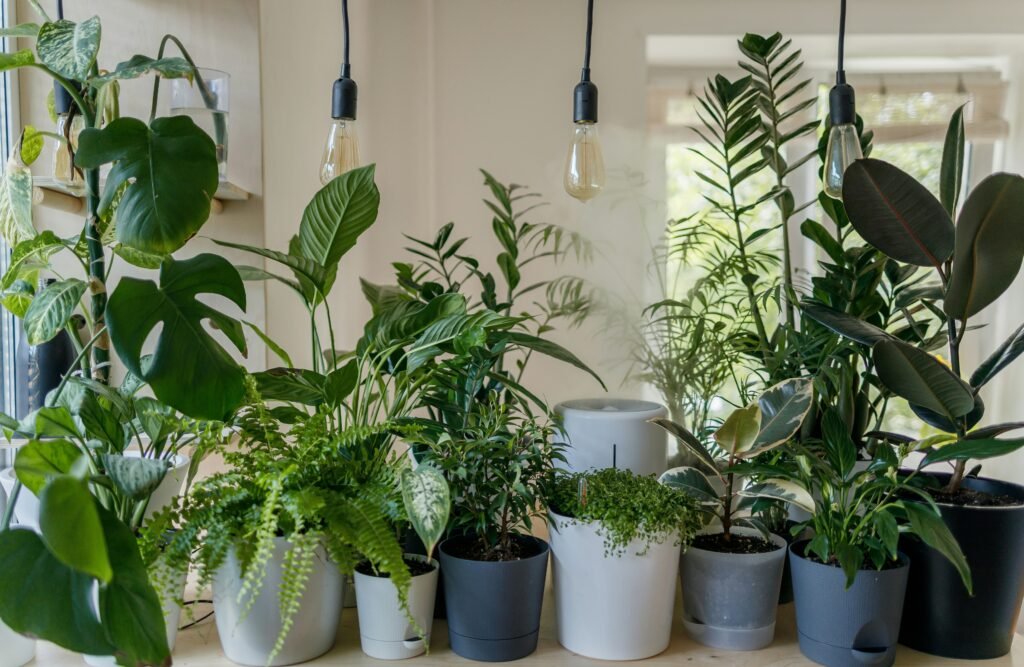
Choosing the Right Plants
The right plant choices make the difference between a thriving indoor garden and a stressed collection. Below is a table to help match common bedroom plant types to light conditions and pet-safety.
| Plant | Light Needs | Pet-Safe? | Care Level |
|---|---|---|---|
| Snake Plant (Sansevieria) | Low to bright indirect | No (mildly toxic) | Easy |
| ZZ Plant (Zamioculcas) | Low to bright indirect | No (toxic if ingested) | Very easy |
| Pothos (Epipremnum aureum) | Low to bright indirect | No (toxic) | Very easy |
| Spider Plant (Chlorophytum) | Low to bright indirect | Yes | Easy |
| Peace Lily (Spathiphyllum) | Low to moderate light | No (toxic) | Moderate |
| Parlor Palm (Chamaedorea elegans) | Low to bright indirect | Yes | Moderate |
| Rubber Plant (Ficus elastica) | Bright indirect | No (toxic) | Moderate |
| Philodendron | Low to bright indirect | No (toxic) | Easy |
| Calathea | Low to medium indirect | Yes | Moderate (likes humidity) |
| Aloe Vera | Bright light | Yes | Easy |
| Boston Fern | Medium to bright indirect | Yes | Moderate (likes humidity) |
| Succulents (various) | Bright light | Some species safe | Easy |
Use this table as a starting point. If you have pets, err on the side of caution and select from clearly pet-safe options.
Statement Plants vs. Groups
Decide whether you want one or two large statement plants (like a tall fiddle leaf fig) or many smaller plants grouped together. Groups create a lush, curated effect, while statement plants anchor the room visually.
Placement Ideas and Layouts
Where you place plants affects both aesthetics and their health. You’ll want to balance the visual weight of green across the room while keeping care needs in mind.
Bedside Plants
Small, low to medium-light plants on a nightstand add fragrance and softness. Choose non-allergenic, low-pollen plants and avoid large, messy species that drop leaves onto bedding. Succulents, small ferns, or a potted pothos can work well.
Window Sill and Ledge
Windowsills are ideal for sun-loving plants. Rotate plants occasionally so they grow evenly. If the sill is shallow, use small pots or hanging planters nearby.
Hanging Plants
Hanging planters free up floor and surface space and add vertical interest. Macramé or minimalist ceramic hangers work well near windows or over a dresser. Use trailing plants like pothos or string-of-pearls for maximum impact.
Shelves and Plant Stands
Shelving allows you to create a layered display of pots, books, and decorative items. Place taller plants on the floor or lower shelves and smaller plants higher up. Plant stands help add variety in height and keep plants off surfaces that might get wet.
Corners and Floor Plants
Use tall plants to fill empty corners and soften architectural lines. A tall palm or rubber plant creates a focal point without taking up valuable shelf space.
Plant Wall or Vertical Garden
If you want a dramatic look, a vertical planter or modular wall system can create a living backdrop. These can be water-intensive to install and maintain, so choose this option only if you’re ready for the commitment.
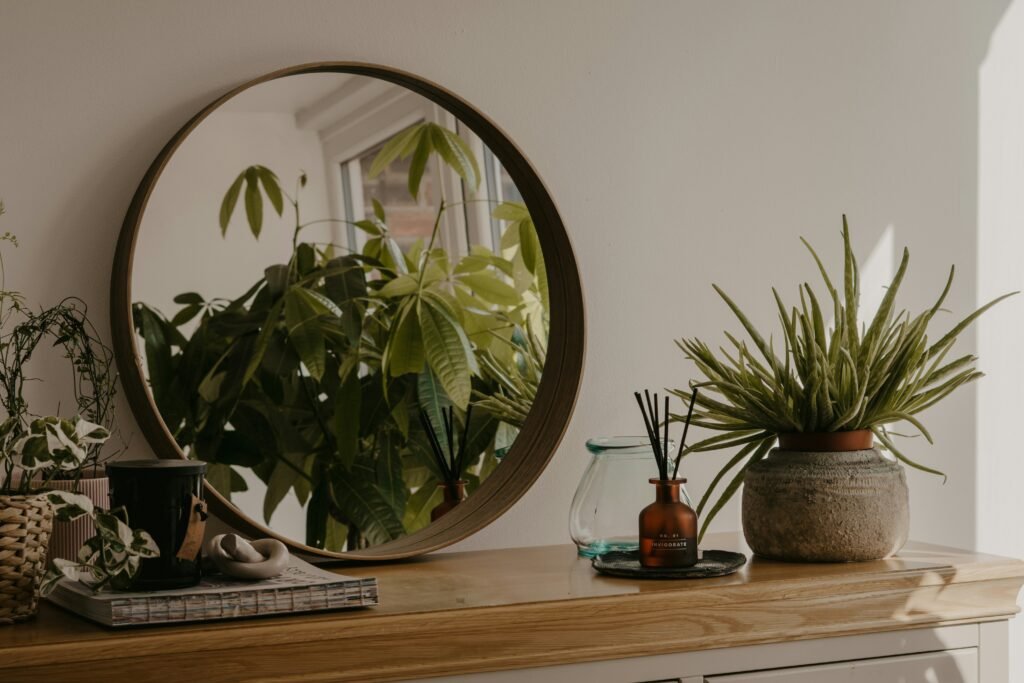
Pot, Planter, and Material Choices
Pots and planters are integral to your decor. They should match the room’s style and provide proper drainage.
Choosing the Right Material
Here’s a quick comparison of common planter materials:
| Material | Look/Style | Drainage | Pros | Cons |
|---|---|---|---|---|
| Terracotta | Rustic, natural | Porous; good | Breathable, classic | Can dry out quickly, heavy |
| Ceramic Glazed | Polished, colorful | Varies; often has drainage holes | Decorative, wide variety | Can be heavy, may retain moisture |
| Plastic | Modern/functional | Lightweight; choose with holes | Budget-friendly, light | Less breathable, can look cheap |
| Metal | Industrial, sleek | Needs liner or drainage | Durable, modern | Can heat roots in sun; may corrode |
| Concrete | Minimalist, sturdy | Often heavy; can have holes | Contemporary, stable | Very heavy, porous unless sealed |
| Wicker/Baskets | Boho, natural | Use liners; no direct drainage | Cozy aesthetic | May retain moisture; requires planter insert |
Always prioritize drainage. If a decorative pot lacks a hole, either place the plant in a nursery pot inside it, add a layer of pebbles for temporary drainage (useful but not ideal), or modify the pot if possible.
Color and Style Coordination
Pick planter colors and textures that complement your bedding, wall color, and furniture. Neutral pots let plants be the star, while bold pots can add pops of color. Consider consistent finishes (e.g., all matte or all glazed) to keep the look cohesive.
Using Trays and Saucers
Use saucers or trays under pots to protect surfaces from water. Choose materials that match the planter or the furniture finish. Clear saucers work for a minimalist aesthetic.
Styling Tips and Aesthetic Approaches
You can use plants to reinforce whatever design style you prefer—from minimalist to bohemian. Here are practical styling strategies.
Create a Focal Point
Use one tall plant or a bold arrangement near the bed or a dresser to draw the eye. That single focal plant anchors the room and creates a natural centerpiece.
Layer Heights and Textures
Mix tall floor plants, medium-height tabletop plants, and hanging or trailing species to create depth. Combine different leaf textures — broad, glossy leaves with fine, feathery fronds — to make the display visually interesting.
Grouping and Odd Numbers
Group plants in odd-numbered clusters (3, 5) for a pleasing composition. Use pots of different heights and styles within a unified color palette for variety without chaos.
Theme-Based Styling
- Minimalist: Use 2–3 sculptural plants in simple, monochrome pots.
- Boho: Mix woven baskets, hanging planters, and a variety of leaf shapes.
- Scandinavian: Choose clean lines, light wood planters, and muted tones.
- Tropical: Use bold-leaf plants, rattan furniture, and bright accents.
Incorporate Non-Plant Decor
Combine plants with books, candles, art, and decorative objects to integrate them into your lifestyle. This prevents plants from feeling like an afterthought.
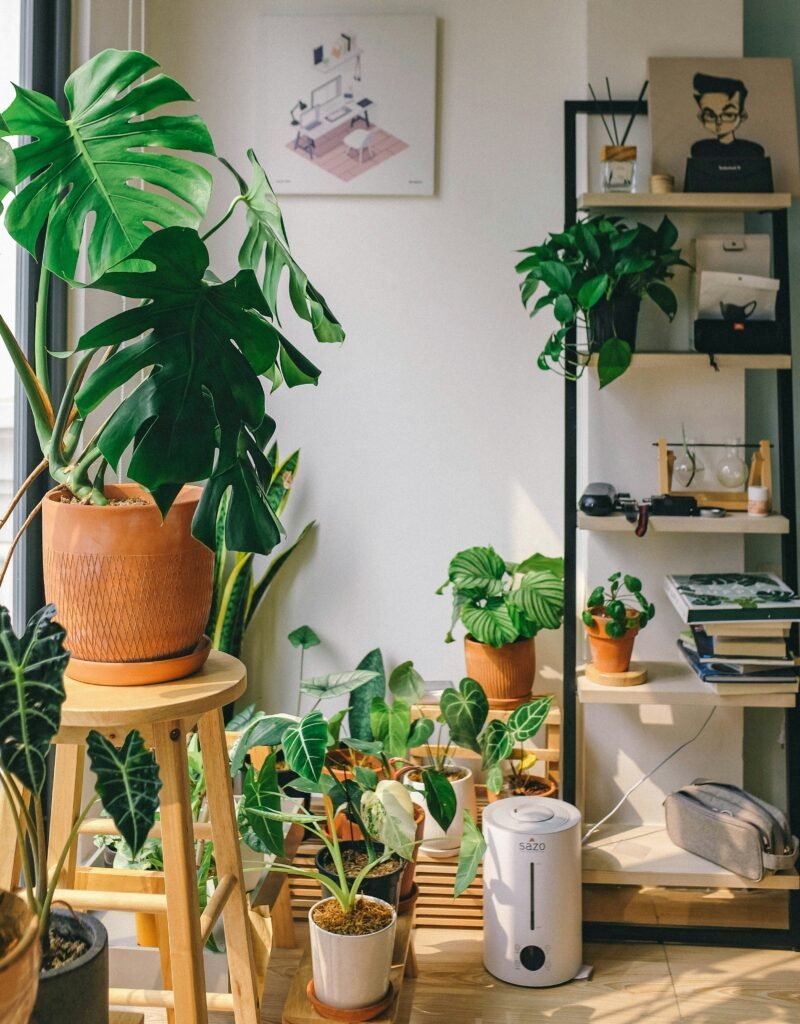
Light Solutions and Artificial Lighting
Not every bedroom has ideal natural light. You can supplement with artificial lighting to keep plants healthy.
Types of Grow Lights
- LED grow lights: Energy-efficient, low heat, and available in full-spectrum options. Great for most bedroom uses.
- Fluorescent lights (T5): Good for seedlings and low-light plants but bulkier.
- Incandescent: Not recommended; inefficient and produce heat.
Placement and Timing
Position grow lights 6–12 inches above plants for most setups and follow manufacturer recommendations. Use a timer to mimic natural daylight cycles — typically 10–14 hours for most houseplants depending on species.
Choosing Lights by Plant Type
- Low-light plants: snake plant, ZZ plant — minimal supplementation.
- Medium-light: philodendron, calathea — 8–10 hours of bright indirect or supplemental LED light.
- High-light/succulents: aloe, cacti — require several hours of bright or direct light, so place near windows or under strong grow lights.
Watering, Soil, and Care Basics
Consistent basic care is the backbone of a thriving plant collection. Overwatering is the most common cause of failure, so learn each plant’s needs.
Watering Tips
- Water when the top inch of soil is dry for most houseplants.
- Use room-temperature water to avoid shocking roots.
- Ensure pots have drainage or use a drainage method to prevent root rot.
- Adjust watering seasonally — less in winter, more in growing season.
Here’s a basic watering-frequency guide (adjust depending on conditions):
| Plant Type | Typical Watering Frequency |
|---|---|
| Succulents/Cacti | Every 2–3 weeks |
| Tropical foliage (philodendron, pothos) | Every 1–2 weeks |
| Ferns & Calathea | 3–7 days (keep soil slightly moist) |
| Snake Plant/ZZ | Every 3–4 weeks |
Soil and Potting Mixes
Use a well-draining potting mix for most plants. Succulents and cacti need a gritty, fast-draining mix; ferns prefer a moisture-retentive, organic-rich mix. Repot every 1–2 years or when roots fill the pot.
Humidity and Temperature
Most bedroom plants prefer average indoor temperatures (60–75°F / 16–24°C). If you have moisture-loving plants like calathea or ferns, increase humidity with a humidifier, pebble trays, or grouping plants together.
Fertilizing
Fertilize during the growing season (spring–early fall) with a balanced, water-soluble fertilizer diluted per instructions. Don’t over-fertilize; that can burn roots and damage plants.
Pruning and Grooming
Prune dead or yellowing leaves to keep plants tidy and prevent pests. Trim leggy growth to encourage bushiness. Clean leaves occasionally with a soft cloth to remove dust and improve photosynthesis.
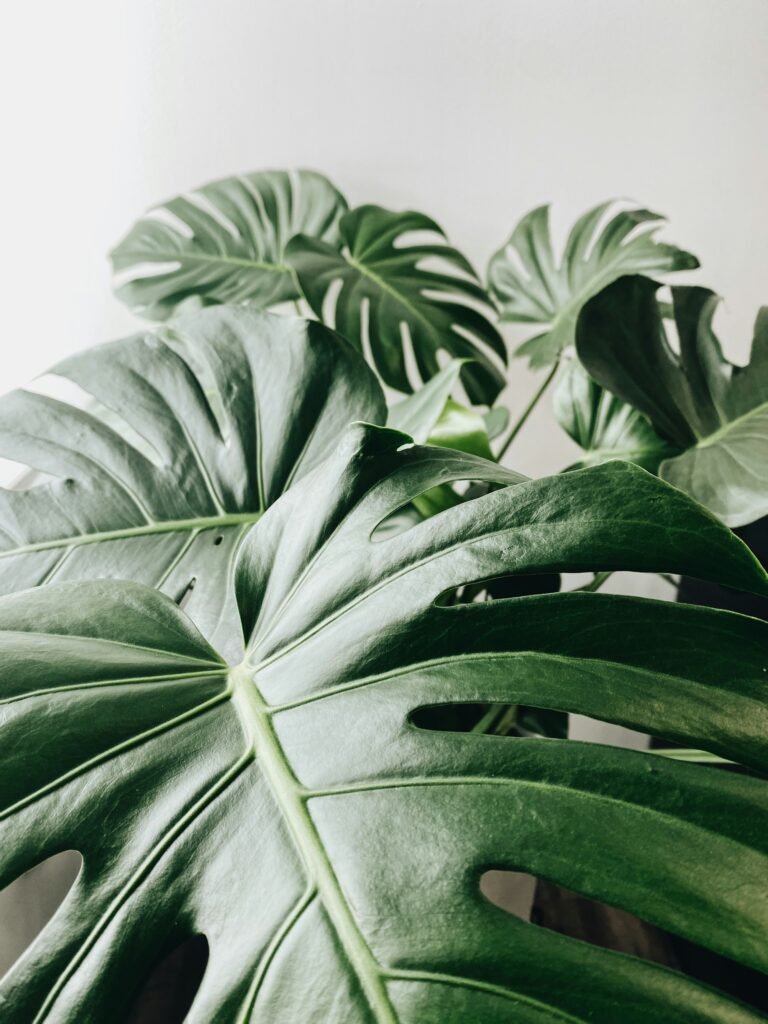
Pest Management and Problem Solving
Even healthy plants can face pests or stress. Early detection makes treatment easier.
Common Pests
- Spider mites: look for fine webbing and stippled leaves.
- Mealybugs: white cottony clusters on stems and leaf nodes.
- Aphids: small, soft-bodied insects on new growth.
- Scale: brown or tan shell-like bumps on stems and undersides.
Natural Treatments
Wipe leaves with mild soapy water, use neem oil sprays, or introduce insecticidal soaps. Isolate affected plants to prevent spread. For severe infestations, consider a targeted systemic insecticide for indoor use.
Nutrient and Light Deficiencies
- Yellowing leaves often indicate overwatering or poor drainage.
- Pale new leaves may signal nutrient deficiency.
- Leggy growth suggests insufficient light — try moving closer to a window or adding a grow light.
Safety and Pet Considerations
If you share your home with pets, safety is crucial. Many popular houseplants are toxic to cats and dogs.
Pet-Safe Plant Suggestions
Choose clearly pet-safe options: spider plant, parlor palm, calathea, Boston fern, rosemary, and certain succulents like haworthia. Always double-check species because common names can be ambiguous.
Placement for Safety
Place toxic plants out of reach — high shelves, hanging planters, or behind barriers. Use deterrents like bitter sprays if pets nibble plants. Training and supervision also help reduce risk.
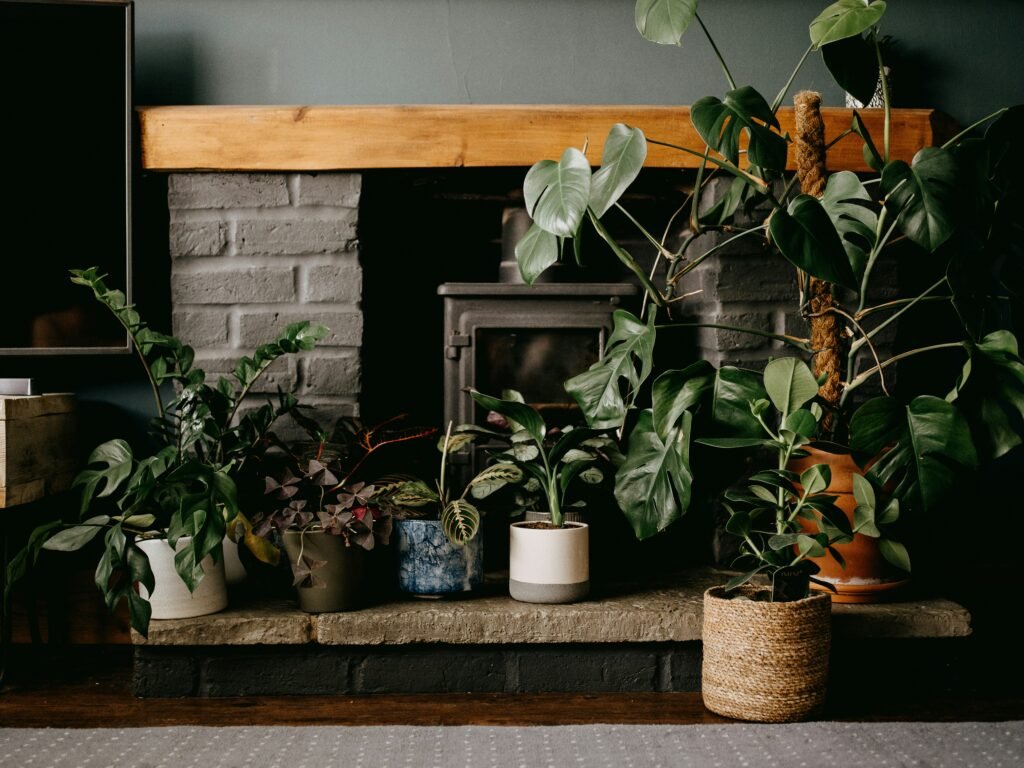
Seasonal Care and Rotation
Seasonal changes affect light, humidity, and temperature. Adjust care routines accordingly.
Winter Care
- Reduce watering frequency.
- Keep plants away from drafty windows or heat sources.
- Consider supplemental lighting if days are short.
Summer Care
- Increase watering slightly as temperatures rise.
- Monitor for pests, which can be more active in warm months.
- Rotate plants to ensure even light exposure.
Rotating Plants
Rotate plants periodically so all sides receive light to encourage balanced growth. This is particularly important for plants near a single window.
Budget-Friendly Tips and Where to Buy
You don’t need a big budget to create a beautiful bedroom garden. Start small and grow your collection gradually.
Affordable Sources
- Local nurseries and garden centers often have healthy plants at reasonable prices.
- Propagate from friends’ plants or swap cuttings with other plant lovers.
- Check plant sales, plant swaps, and online marketplaces for deals.
DIY Pot Projects
Repurpose thrift-store pots, paint inexpensive terracotta, or create simple macramé hangers with basic supplies. Small DIY touches can make inexpensive plants feel curated.
Simple DIY Projects for the Bedroom
Engage in a few small projects to personalize your plant decor.
Macramé Plant Hanger
A basic macramé hanger adds bohemian flair and frees up surfaces. Use cotton rope and follow a beginner tutorial to learn a few knots.
Pebble Trays
Create a humidity-boosting tray with pebbles and water under plant pots (ensure the pot sits above the waterline). This is great for ferns and calatheas.
Upcycled Planters
Paint thrifted pots or line baskets with reusable liners to create unique planters that match your decor.
Troubleshooting Common Problems
When things go wrong, check these common issues.
Yellow Leaves
Often caused by overwatering or poor drainage. Check soil moisture and root health. Repot if roots are rotting.
Drooping Leaves
Could be underwatering, overwatering, or shock from temperature changes. Assess recent care changes and adjust.
Brown Leaf Tips
Usually a sign of low humidity, fluoride or salt buildup from tap water, or inconsistent watering. Trim brown tips and improve humidity or use distilled water.
Plants Not Growing
Insufficient light, lack of fertilizer, or being root-bound can slow growth. Evaluate light conditions, feed appropriately, and repot if necessary.
Final Styling Checklist
Use this quick checklist to finish your bedroom plant project:
- Assess natural light and measure potential plant spots.
- Choose a mix of heights and textures.
- Pick pots that provide drainage and match your decor.
- Group plants in odd numbers and vary heights.
- Add a statement plant or a hanging cluster.
- Set up a simple care routine for watering, fertilizing, and cleaning.
- Ensure pet safety if applicable.
- Use grow lights if natural light is insufficient.
- Start small and expand as your confidence grows.
Conclusion
You can create a bedroom filled with plants that looks intentional, supports your lifestyle, and enhances your well-being. With the right planning, plant choices, and care routine, your space will feel more calming and personalized. Treat your bedroom plants as part of your daily routine — a few minutes of attention can keep them healthy and make your room feel like a restful, natural retreat.
If you want, tell me about your bedroom’s light conditions, square footage, and whether you have pets, and I’ll recommend a tailored plant plan and a list of specific species and pot ideas for your space.
